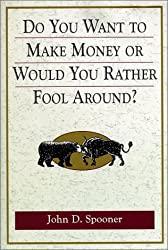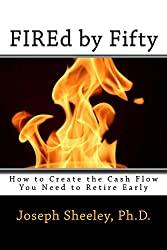One of the most dangerous times to buy stocks is during a rapidly falling market. It is during these times when prices become entirely irrational. You’ll see a stock that has fallen by 40 or 50% and you’ll figure that it is dirt cheap. But then you’ll buy in and see your position quickly cut down as the stock continues to fall. The same is true even if you’re buying index funds, although the percentage size of the moves will tend to be less.
It is also the best time since falling markets take everything down – good stocks and bad stocks. The bad stocks may go away entirely as they go bankrupt, but the stronger companies will survive and gain market share, meaning that when they come back they’ll be in better shape than ever. Huge gains are made after a downturn ends and heads back up. Big losses are created very quickly during downturns, however.
(Note, this site contains affiliate links. As an Amazon Associate I earn from qualifying purchases. When you click on an affiliate link and buy something, The Small Investor will get a small commission for the referral. You are charged nothing extra for the purchase. This helps keep The Small Investor going and free. I don’t recommend any products I do not fully support. If you would like to help but don’t see anything you need, feel free to visit Amazon through this link and buy whatever you wish. The Small Investor will get a small commission when you do, again at no cost to you.)
Catching a falling knife
Buying a stock in a falling market is called “catching a falling knife” for obvious reasons. It is really easy to get cut. The important thing to remember is that stocks tend to fall a lot further than you think they will. Rationality and considerations for stock value go right out the window. This is a good thing since it means you can get a great stock for a great price, but don’t expect to buy a stock at the bottom.
Instead, put in money in regular increments. Accept that you cannot know which way the price of the stock will go from day to day and just plan to buy shares on a regular basis as the stock falls. Buy a few shares each week, each month, each paycheck, etc…. You won’t get the best price possible, but you should get a decent cost basis. Just keep in mind that you’re getting lower prices than you would have before and that once things start to turn around, you’ll make great gains regardless of what price you pay.

This is my first book, which covers all of the details of how to invest and the risks involved in investing in different types of securities. This is the information you need to know before buying individual stocks or even mutual funds. Even more than that, it tells you what you should be doing at each stage of life to come out financially independent before you retire. Click on the book image above to learn more about it and read an exert on Amazon.
Buy even if it goes up
If the stock goes up in price, you may be tempted to wait for it to fall back down again before buying more. But again, realize that it is impossible to know which way the stock will go. A move upwards may be a false rally, but it may also be the start of a huge real rally. You’ll lose a lot more by missing out on a rally than you will by buying shares before the price retreats again for a while. If you buy in equal cash amounts, called “dollar cost averaging,” you’ll be buying more shares when the stock is cheap than when it is expensive, naturally lowering your cost basis.
Likewise, don’t get worried that you’ll be missing out on a huge rally if you see the stock price rise quickly and rush in to buy all you can. There are many false rallies during a market downturn and people who have held onto shares at a loss often sell into these rallies, happy to have gotten a little of their money back, causing the shares to fall back down. It is only after all of these people have been bought out does the real rally begin.

Learn to be a better investor by reading J.D. Spooner’s Do You Want to Make Money or Would You Rather Fool Around? This book made me realize that I wasn’t buying enough shares in the companies I was investing in, meaning my wins were no where near as big as they should have been.
Avoid chasing things too far
Sometimes we’re just wrong about a company. Sometimes things radically change and a company goes bankrupt. Great companies sometimes just fall apart and never recover, so previous highs become immaterial. Before you start buying in, set a limit to the amount of money you’ll invest. Once you reach that limit, stop and move on to another company for future investments. Even if the stock continues to drop in price and you think you can cut your losses by buying more shares and lowering your cost basis, stop if you’ve already invested up to your limit.
Before you can start investing, you need money to invest. Please check out my latest book, FIREd by Fifty: How to Create the Cash Flow You Need to Retire Early

Have a burning investing question you’d like answered? Please send to[email protected] or leave in a comment.
Follow on Twitter to get news about new articles. @SmallIvy_SI
Disclaimer: This blog is not meant to give financial planning or tax advice. It gives general information on investment strategy, picking stocks, and generally managing money to build wealth. It is not a solicitation to buy or sell stocks or any security. Financial planning advice should be sought from a certified financial planner, which the author is not. Tax advice should be sought from a CPA. All investments involve risk and the reader as urged to consider risks carefully and seek the advice of experts if needed before investing.
